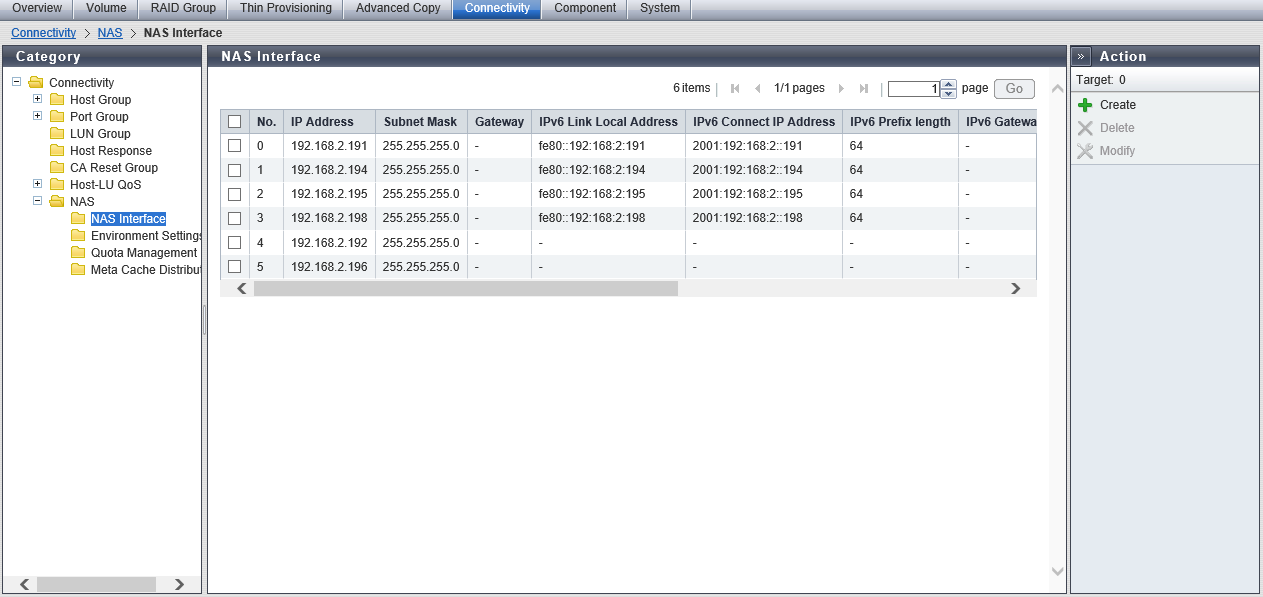NAS Interface
Overview
This function displays a list of the NAS interfaces.
This function is displayed in a Unified Storage environment.
A unified upgrade is necessary for a storage system that will be used in a Unified Storage environment if it was previously used in a SAN environment. Refer to the [Register Unified Storage License] function and the [Apply Controller Firmware] function for details. This function is added in the category after the unified upgrade is complete.
User Privileges
Availability of Executions in the Default Role
| Default role | Availability of executions |
|---|---|
| Monitor | |
| Admin | |
| StorageAdmin | |
| AccountAdmin | |
| SecurityAdmin | |
| Maintainer |
Refer to User Roles and Policies for details on the policies and roles.
Display Contents

NAS Interface
| Item | Description |
|---|---|
|
No. |
The NAS interface number (0 to 159) is displayed. |
|
IP Address |
The IPv4 address of the target port is displayed. |
|
Subnet Mask |
The subnet mask of the target port is displayed. |
|
Gateway |
The IPv4 gateway address of the target port is displayed. |
|
IPv6 Link Local Address |
The IPv6 link local address of the target port is displayed. |
|
IPv6 Connect IP Address |
The IPv6 connect IP address of the target port is displayed. |
|
IPv6 Prefix length |
The IPv6 prefix length of the target port is displayed. |
|
IPv6 Gateway |
The IPv6 gateway address of the target port is displayed. |
|
VLAN ID |
The VLAN ID of the target port is displayed. If the VLAN ID is not specified, a "-" (hyphen) is displayed. |
|
Port |
The location information of the port with the NAS interface setting is displayed. If the port is not specified, a "-" (hyphen) is displayed. CM#x CA#y Port#z x: CM number y: CA number z: Port number |
|
Redundant Port |
The location information of the pair port, which configure multipath setting with the target port, is displayed. If the redundant port is not specified, a "-" (hyphen) is displayed. CM#x CA#y Port#z x: CM number y: CA number z: Port number |
|
Failover Status |
The failover status of the multipath is displayed. A "-" (hyphen) is displayed when the multipath is not set (or when "Redundancy" is "Single").
x: CM number y: CA number z: Port number |
|
Redundancy |
The connection type of the target port is displayed. When the connection type is "Active-Active" or "Active-Standby", the "Redundant Port" information is displayed.
|



